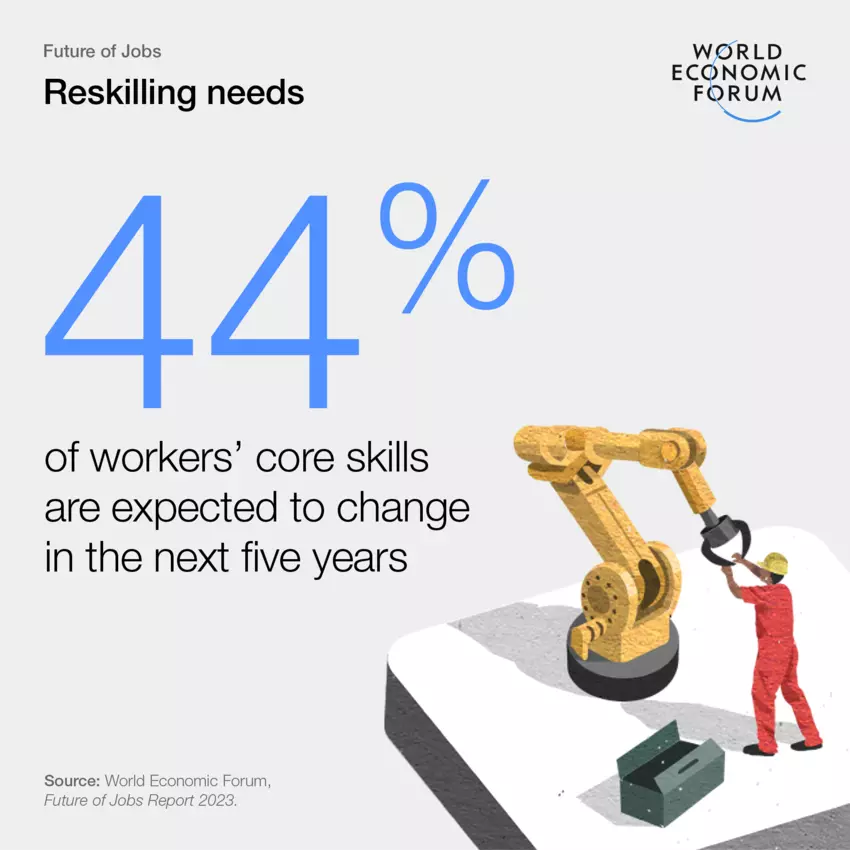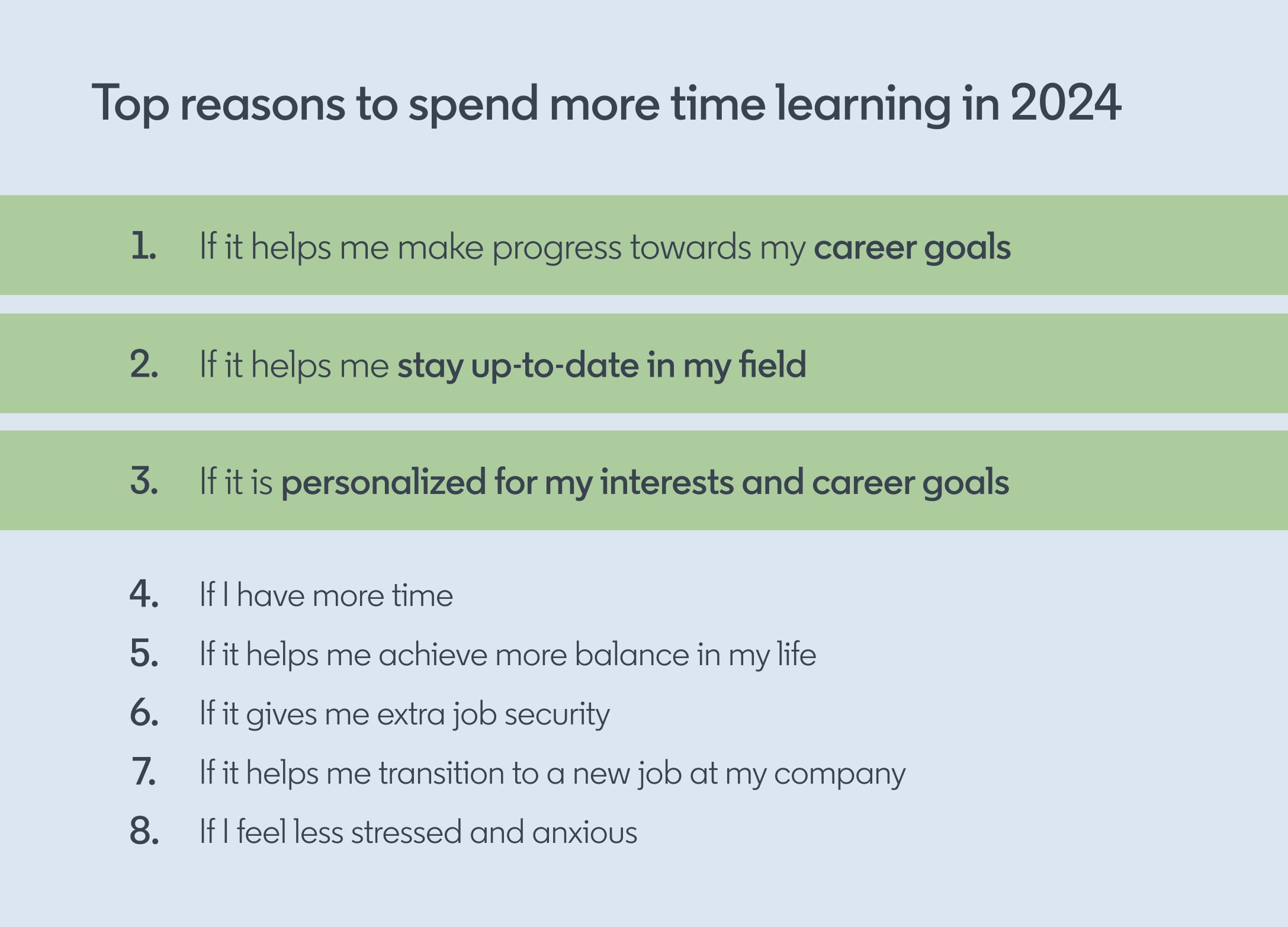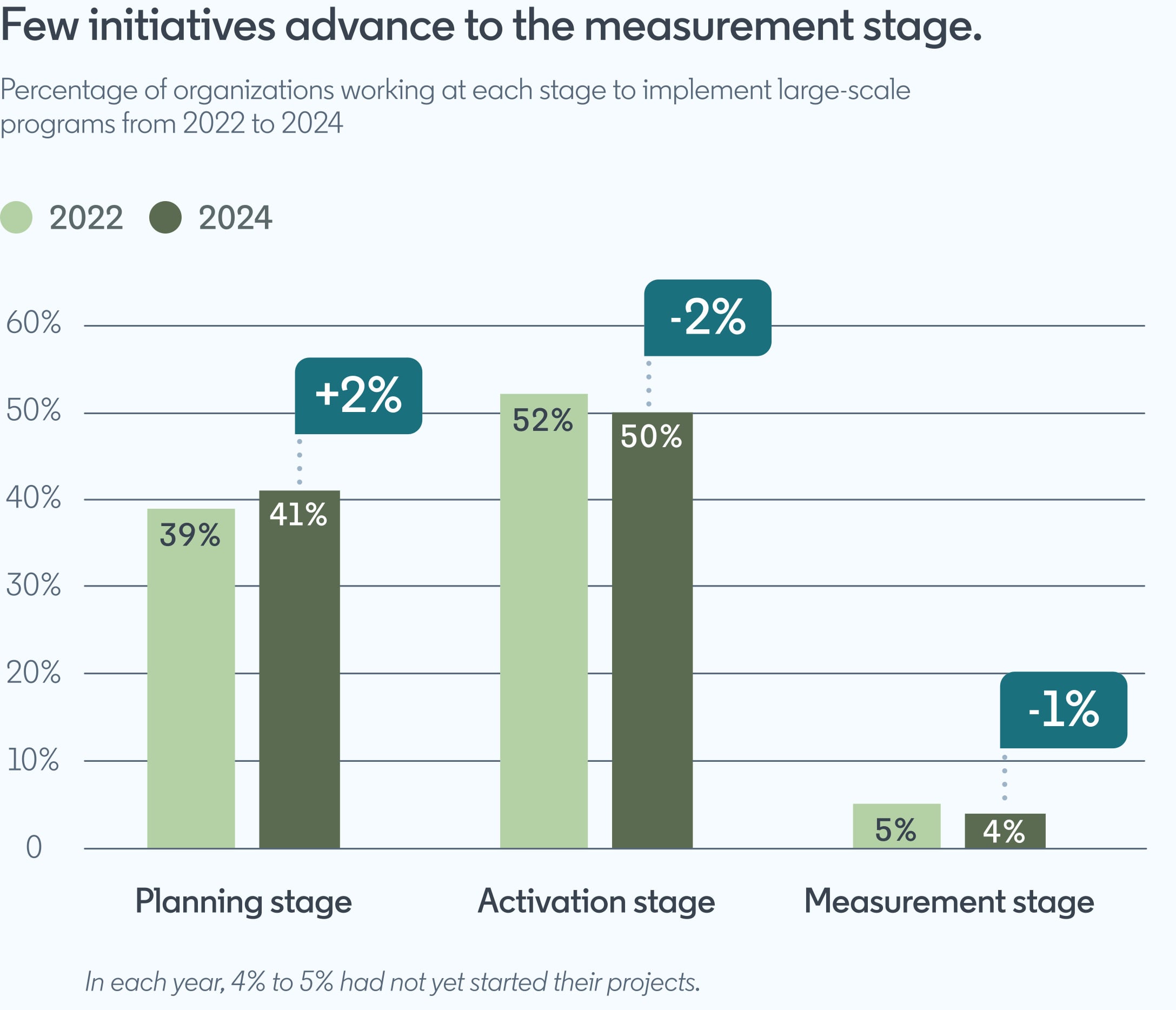Updated: October 9, 2025- 7 min read
Research by the World Economic Forum shows employers estimate that 44% of workers’ skills will need to evolve in the next 5 years to adapt to the coming wave of new technology. Within the world of product, providing product teams with the skills and tools they need to succeed can have a direct impact on revenue, as we’ll see in this article.

Furthermore, the world of Product has an important lesson to teach organizations interested in upskilling: agile, customizable solutions are the only answer. While one-size-fits-all training programs might seem like the easy answer, these bulk options are clunky to implement and yield unsatisfactory results.
Editorial note: This post is based on the webinar How to Upskill Product Teams to Increase Revenue, a panel discussion between Product School CEO Carlos González De Villaumbrosia and Mariana Abdala, VP of Product at Product School. This post contains additional insights and examples from the Product School team. Watch the full video below.
Product Management: The Keystone of Your Growth Engine
Product sits at the heart of what many are calling the fourth industrial revolution. Users are adopting products like ChatGPT, Grammarly, and Bing AI at an unprecedented velocity. These products are changing the way people live and work, and companies that embrace AI are seeing a similarly dramatic surge in growth.

Product management drives strategic outcomes and sustainable growth. Because it is a role that transcends traditional boundaries, product managers have a unique opportunity to influence strategic business decisions and innovation.
Of course, product managers need reskilling and mentorship like anyone else. The good news is, reskilling product managers directly impacts business outcomes like revenue.
The shift that we are seeing—and contributing to—is elevating the product role as a business function that can really drive business outcomes.
- Carlos González De Villaumbrosia, CEO, Product School
From Day-to-Day Tasks to Strategic Business Impact
Product managers are no longer seen only as custodians of the product lifecycle; they are now architects of business strategy, contributing directly to the bottom line and overall growth of the company.
This transformation is predicated on a deep understanding of market needs, customer behavior, and competitive landscapes, enabling product managers to identify opportunities for innovation and differentiation.
The strategic influence of product management is manifest in its ability to align product development with business goals, ensuring that every feature, update, and new release is a step towards achieving overarching objectives. This alignment is critical in driving revenue growth, enhancing customer satisfaction, and securing a competitive edge in the market.
Customized Training Programs: Tailoring Your Path to Innovation
Product management is so varied and dynamic that the one-size-fits-all approach to professional development falls short. Recognizing the unique challenges and opportunities each organization faces, customized training programs stand out as essential pathways to fostering innovation and driving meaningful change.
Cultivating a Culture of Learning for Competitive Advantage
Fostering a culture of continuous learning within the product team is indispensable for maintaining a competitive advantage. This culture of learning encourages team members to stay abreast of industry trends, emerging technologies, and innovative methodologies, thereby enhancing their ability to contribute to the organization's strategic goals.
According to the Dell Technologies Innovation Index Research Report, “offering training and mentorship to build skills and aptitude” is one of the hallmarks of the innovative organizations that accelerate 2.2x during recessions and times of economic uncertainty compared to their counterparts who lag behind them in the “Innovation Index”.
68% of workers are willing to retrain, according to the U.S. Chamber of Commerce’s 2022 study, which found that 74% of employers that offer tuition assistance for reskilling report a positive ROI.
Investing in training and development initiatives, mentorship programs, and knowledge-sharing platforms are key strategies for cultivating a culture of innovation and growth. These initiatives not only equip team members with the necessary skills and competencies but also foster a sense of engagement and belonging that increase employee motivation and retention.

By prioritizing learning and development, organizations can ensure that their product management teams are well-equipped to navigate the complexities of the modern business landscape, driving growth and securing a sustainable competitive edge.
Identifying the Skills for Tomorrow's Success
The first step in crafting effective customized training programs involves a thorough assessment of the current skill sets within the organization and juxtaposing them against the competencies needed for future success. This gap analysis is critical, as it highlights the areas where upskilling is most urgently needed and provides a roadmap for curriculum development.
According to the World Economic Forum, the top 3 skills businesses are interested in developing over the next several years are analytical thinking, creative thinking, and AI and Big Data.
Surprisingly, Pluralsight’s 2023 study showed only 14% of tech managers said their organization provides paid time to learn AI/ML. This demonstrates that closing the gap between existing and needed skills is no easy task. It also shows how much opportunity there is to pull ahead in the race to AI readiness.

Soft skills such as leadership, communication, and cross-functional collaboration are increasingly recognized as pivotal for the successful implementation of strategic initiatives. Customized training programs, therefore, must be holistic, addressing both the technical acumen and the soft skills necessary for navigating the complexities of today's business environment.
Customized training programs, by focusing on the specific needs and goals of an organization and its team members, serve as powerful catalysts for innovation and growth. They not only equip individuals with the skills and knowledge needed for success but also foster a culture of continuous learning and development that is essential for long-term organizational resilience and competitiveness.
Transform with AI
Increase revenue and productivity when you equip teams with AI skills and training.
Learn More
Benefits of Upskilling Beyond Revenue
According to LinkedIn’s 2024 Workplace Learning Report, 8 out of 10 employees report that learning enhances their sense of purpose at work.
Creating personalized learning paths that align with individual career aspirations and the organization's strategic goals can significantly boost engagement. By involving employees in the design of their learning journey, organizations can ensure that the content is relevant, meaningful, and directly applicable to their roles.

The role of leadership in modeling a learning mindset cannot be overstated. When leaders actively participate in learning programs and share their experiences and insights, they send a powerful message about the value of continuous personal and professional development. This leadership commitment helps to foster a learning culture that encourages exploration, innovation, and resilience in the face of challenges.
Overcoming Challenges in Upskilling Efforts
The journey to implementing successful upskilling initiatives is fraught with challenges that can undermine their effectiveness and impact. Recognizing and addressing these challenges head-on is crucial for organizations aiming to harness the full potential of their workforce through continuous learning and development.
The 2024 LinkedIn Workplace Learning study finds a significant lag between planning and starting upskilling initiatives and getting to the stage where success and impact can be measured.

One of the major obstacles highlighted by LinkedIn is the tendency at large companies to implement one-size-fits-all solutions for hundreds or more employees at a time. These are cumbersome to implement and often employees don’t find them as engaging as tailored solutions that apply to their day-to-day.
When it comes to upskilling, other functions have a lot to learn from the agile, cross-functional approach that product teams have been implementing since the beginning of product management. At the end of the day, people and products are not so different (and with AI, the distance is closing every day). Just as successful product development depends on lean, iterative processes that adapt to market changes and seize on opportunities, so too does upskilling need to be agile and continuously improving.
Updated: October 9, 2025




